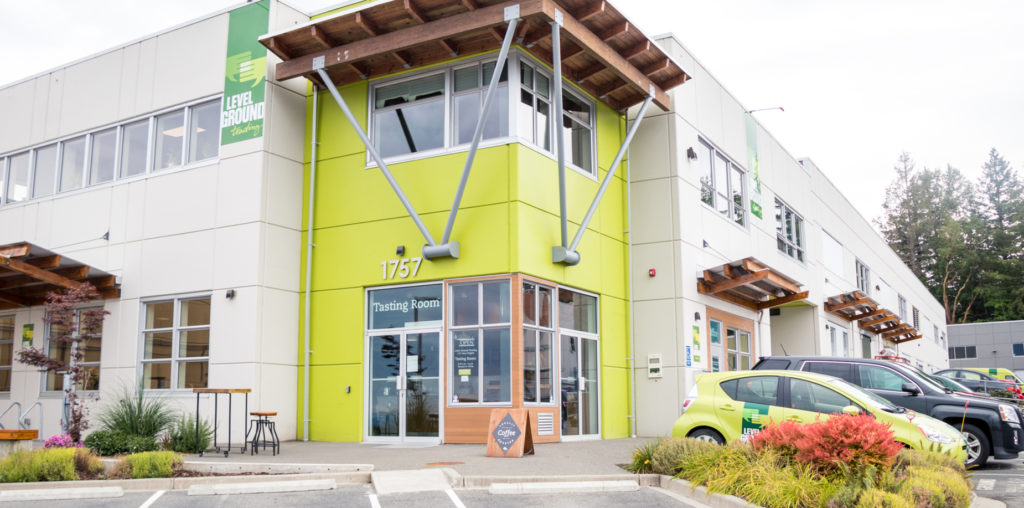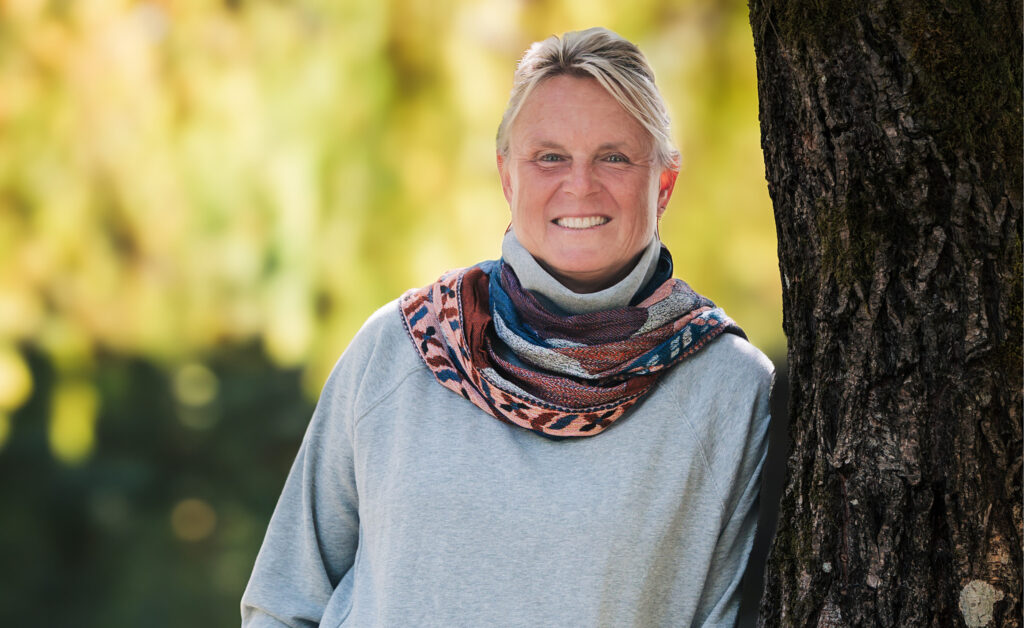by Deborah Rogers –
You’ve almost certainly seen Level Ground coffee at the grocery store – its distinctive packages have the coffee grower’s faces on the front – but what you might not know is that all that coffee is roasted right here on the Saanich Peninsula. Level Ground Trading operates from a unique location on Sean Heights. There’s a welcoming coffee shop and tasting bar with a stunning view over Central Saanich; as well as their regular hot drinks visitors can sample a flight of different coffees or try a new preparation style.
The coffee shop is where the building stops for most visitors, but in the company of Stacey Towes, co-owner, founder and self-professed coffee nerd, I had a full behind-the-scenes tour. I don’t know what I was more awed by: Stacey’s knowledge and enthusiasm, or the building, which was purpose-built for Level Ground back in 2018. As he showed me around and introduced me to various staff members, Stacey explained to me how the starting process for every bag of coffee sold is a relationship. The Level Ground ethos ensures that connections are made and sustained in the country where the beans are grown. They have long-standing relationships with coffee growers in Central and South America and Africa, with sugar and fruit growers in the Carribean, and tea and spice growers in India. Their care over the process of each of the products they sell starts with the person who grows and harvests that product.
Stacey wears his heart on his sleeve when it comes to the business and the philosophy behind it. It’s been 23 years since the company was started through an initial relationship with a coffee grower in Columbia. Stacey (and co-founder and wife Lauren) are motivated to bring justice and view FairTrade as one important aspect of that. Stacey has an activist’s zeal and is constantly building on his love of people, relationships and supporting good work wherever it is happening around the world. It matters to him that workers are compensated fairly and treated well: both in the far away countries where the crop is grown, or here in our community where they employ around 30 staff.
The highlight of the vist for me was talking with Joshua in the Cupping Room. It sounds like a secret lab, and it definitely had that feel. This is where each potential container of beans is evaluated. We discussed tasting notes, palettes, quality control and process. Seriously, if you want to be assured that someone is looking out for you when it comes to a great cup of Joe you only need to spend 10 minutes in this coffee command centre!
Last year 1.4 million green pounds of coffee was roasted at Level Ground. It’s hard to conceive what that volume of beans looks like, but the 20,000-square-foot warehouse gives a sense of the scale that the company is operating on. Beans arrive by the container load via barge from Vancouver. Each sack weighs about 60 kilos, which represents the annual production of about 100 coffee plants. Looking at the towering piles of these sacks in the warehouse is to start to understand just how much processing and packing and shipping-out takes place in the middle of our community. Of course, the processing of coffee is actually very minimal: those sacks of green beans have to get tipped into one of three roasters, roasted to perfection in small batches, and then packaged up again.
Because the building was purpose-built, all sorts of environmental considerations were able to be factored in. One that Stacey is especially proud of is that hot air from the roasters is recaptured and reused – it has resulted in a big reduction in natural gas consumption. Sustainability is more than a buzzword here. As well as incentives for staff to cycle to work there’s an ambitious approach to waste. The company has been landfill-free for 16 years, which means a complicated recycling set up, but also that they are always on the lookout for ways to do things better. The burlap sacks that the beans arrive in go to local farm 10 Acres where they’re used in the greenhouses. The chaff that’s left over from the roasting process is also picked up by them for composting.
There are several tonnes of orders ready to ship each day. They’re going out to individual purchasers in the community, to church groups and coffee shops, and to corner stores and grocery stores all across western Canada. It’s a long journey from plant to cup; how reassuring to know that every step of the way there’s been care and consideration taken for the lives of the people involved.
What do you want Deb to peek behind the scenes of next? Email news@seasidemagazine.ca with your ideas or an invitation!
Photos by Amanda Cribdon Photography




